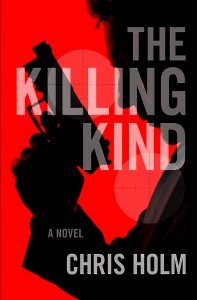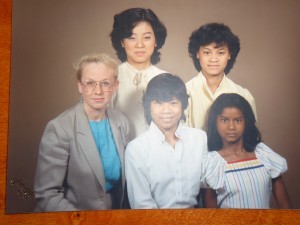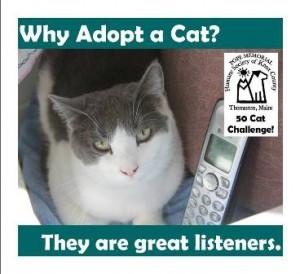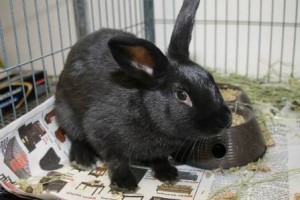Lea Wait's Blog, page 291
May 19, 2015
I Came in from the old Cold (War)
 Gayle Lynds When I was young, there were times when I surprised myself by doing something smart. In fact, it was because of one of those wonderful aberrations that I was inspired to write international espionage novels. It all started when I was hired by a private think tank that did studies for the U.S. military as well as other organizations. The job was as a lowly copy editor, the first rung on what I hoped would lead to God-knew-what. I had just graduated from the University of Iowa with a degree in journalism. My problem was, the only college classes I found riveting were in fiction writing, at the Iowa Writers Workshop
Gayle Lynds When I was young, there were times when I surprised myself by doing something smart. In fact, it was because of one of those wonderful aberrations that I was inspired to write international espionage novels. It all started when I was hired by a private think tank that did studies for the U.S. military as well as other organizations. The job was as a lowly copy editor, the first rung on what I hoped would lead to God-knew-what. I had just graduated from the University of Iowa with a degree in journalism. My problem was, the only college classes I found riveting were in fiction writing, at the Iowa Writers Workshop
But novelists didn’t earn livings.
Novelists starved in garrets.
I’d heard they led rich sexual lives.
No, no – I needed to earn a living.
So with a brand-new wedding ring and my journalism creds, I went off to the California think tank with the goal of eventually writing abstracts and reports and of working with scientists who studied how to green deserts, create model villages down to portable generators, and – remember this was defense and intelligence work, too – kill enemies in large numbers.
But first I had to wait for an intense government background check – tracking down my high school algebra teacher was a pain, I heard later. Until then, I wore a badge with only my name – no security classification. I felt like a file folder with a blank tab. I needed my tab to be blue or orange or maybe red (even though it was still the Cold War, and red = Communist), with my name and clearance typed in boldface. With that, I could get access to a file drawer and some meaningful work.
As I waited, I was restricted to unclassified public information and certain areas in the building. If I wanted to go into the print shop, I had to grab a fellow employee to tap his or her secret code onto the keypad that unlocked the door. Then the employee had to hang out, watching over me. If I needed to go upstairs to a lab, same routine. This of course was an irritant, because they had real jobs to do. Still, no one in that dozen-story building showed any interest in sharing his or her code to get rid of me, and I had enough common sense (it happened sometimes) not to ask.
Weeks later I was finally awarded Top Secret clearance. With it came much more interesting work that delved into problems around the world, but I also had more rules: If I left my office, even if it was for just three minutes to get a cup of coffee, I had to lock all my classified documents back in my safe. If I was working on a need-to-know project, I couldn’t mention it at the gabfests around the water cooler, even obliquely. On the wall in the Security Office hung a poster – I’m not kidding – from World War II: “Loose Lips Sink Ships.” In our case, it signified the Ship of Government Research. The poster was a source of amusement because it was so darn old – but at the same time it was a point of pride that we classified employees had a history of working quietly and often successfully behind the scenes for our nation. I was 21 years old and finally beginning to grow up.
I was lucky to have experienced all of this, because it ignited my fascination with geopolitics, history, culture, and clandestine agencies. (Did I mention the shadowy characters I’d occasionally meet?) When my first baby was born, I left the job (even though I’d been promoted from copy editor to full editor – wahoo!), but never the pride I had in my work and fellow employees.
These days the old Cold War is long behind us, while a new one periodically heats up. I’ve been publishing spy thrillers for some twenty years now. I credit my three years at the think tank for giving me the subject matter I needed to get me off the literary fence and into writing fiction. I still stay in touch with the covert world. In fact, a few years ago I had the honor of taking a group of fellow authors for a tour of Langley.
Security clearances play a key role in my new international spy thriller, The Assassins, due out June 30th. It’s no surprise, but then as former Defense secretary and CIA chief Robert Gates once said, “When a spy smells flowers, he looks around for a coffin.
———————————————–
Gayle Lynds is the best-selling, award-winning author of ten international espionage novels, including The Book of Spies and The Last Spymaster. Library Journal calls her “the reigning queen of espionage fiction.” A member of the Association for Former Intelligence Officers, she is cofounder (with David Morrell) of International Thriller Writers. Visit her at www.GayleLynds.com
Back to School
Al Lamanda here.
So I returned to the high school where my friend is a teacher (another free lunch was involved) to meet with some students interested in pursuing a life of poverty, or put another way, a career as a writer.
When last we met, the group of thirteen (six guys, six gals and one I’m not sure about) agreed to write two versions of an original short story. One version written from the heart without doing research and a second draft after researching their subject matter. The follow-up meeting with the group went sort of like this.
Me: “Who would like to read their story first?”
The I’m not sure about kid did a great impression of (are you old enough to remember?) Horshack from Welcome Back Kotter, so the I’m not sure about kid went first.
Me: “Go ahead and read your story.”
The I’m not sure about kid proceeded to sit and read the story. Silently, lips moving ever so slightly.
Me. “I mean out loud to the group.”
The I’m not sure about kid. “But everybody will hear me.”
Me. “Exactly the point. An excellent way to identify awkward, clunky sentences is to hear them spoken. Sometimes what makes sense to the eye doesn’t to the ear. Always read your writing out loud even if only to yourself.”
The I’m not sure about kid read out loud and the group was able to identify several sentences that rang false to the story, and several that didn’t seem to make sense at all.
Me. “Rewrite the sentences so they flow better in the context of your story and eliminate the sentences that don’t seem to make sense or fit with what you’re trying to say. Now let’s talk about spelling and grammar.”
The I’m not sure about kid. “I used spell check.”
Me. “That’s good, but a word can be spelled correctly and still be incorrect.”
The I’m not sure about kid looked at me with a blank stare, as did most of the rest of the group.
Me. “Its and it’s are two different words. So are their and they’re. Likewise with your and you’re. So it’s entirely possible to spell a word correctly yet spell it incorrectly.”
I could see the group playback English 101 in their heads.
Me. “Read your story backwards.”
The I’m not sure about kid. “Backwards. Why?”
Me. “When you read backwards you tend to bypass the brain seeing what it wants to see. You’ll see the missing apostrophe in the words its or the apostrophe in the words it’s that doesn’t belong there. Try it right now.”
While the I’m not sure about kid sat and read backwards, a girl asked a question.
Girl: “Is that like playing a Beatles record backwards? My grandfather told me they had secret messages on their records if you played them backwards.”
Me. “Which Beatles are we talking about? The cuddly mop tops of I want to Hold Your Hand, or the what the hell are they talking about Yellow Matter Custard Dripping from a Dead Dog’s Eye hippie Beatles that came later?”
Girl: “I don’t know. I’m not that old like you.”
Football player kid. “I saw a record at a flea market once. It was like a quarter.”
The I’m not sure about kid. “Eleven. I found eleven words spelled wrong.”
Me: “Good. Now correct those words and then don’t look at your story again until tomorrow. Sleep on it for at least one day, maybe two.”
The I’m not sure about kid. “I like sleeping.”
Me: “Hey, who doesn’t? At my age it’s the highlight of my day, but that’s not the point. Sleep on your story so that your brain forgets what you wrote and doesn’t see what it expects to see, but what is actually there. This is called what?”
The I’m not sure about kid. “Sleeping.”
Football player kid: “Coach says I should get eight hours every night, even during the off season.”
Girl: “My mom says she is sleep depraved.”
I glanced at my teacher friend and he was at the window, happily filing a fingernail and softly humming Beautiful Dreamer.
Me: “I think you mean deprived. And I’m not really talking about sleep. I’m talking about editing.”
“Football player kid: “Like when I screw up a play and the coach calls it a mental mistake and he tells me to sleep on it.”
Me: “Your coach is a wise man.”
Girl: “Is depraved a misspelled word?”
Me: “That depends on how you spell it.”
Girl: “I’m confused.”
Me. “Welcome to the very large club. It will get worse when you become old like me.”
Science fiction boy: “So you’re saying if we wait a day to check our story for mistakes, it’s easier to spot them?”
Me: “Not just mistakes, but content. Hemingway was a big believer in less is more. Why use nine words to say what you want to say when three will do. In most cases cut and not add is the rule. Concise writing is much easier to read than lengthy, run-on sentences and in most cases, more powerful.”
The I’m not sure about kid. “Who is Hemingway?”
Me: “He was who you aspire to be.”
Girl: “My baby brother has a turtle named Hemingway. My Dad named it.”
Football player kid. “Wasn’t Hemingway that big dog in that movie?”
Science fiction boy. “That was Beethoven. I heard he was deaf.”
Football player kid. “The dog was deaf?”
I glanced at my teacher friend and he was gazing out the window, minding his own business.
I looked at Football player kid. “Very good. You said in four words what you could have said in eight or ten.”
Football player kid. “I don’t understand.”
Me. “You could have said “How did you know that the dog was deaf?” or “Who told you that the dog was deaf?” or “How come nobody else heard that the dog was deaf?” but instead you chose a short, concise and to the point, “The dog was deaf?”
Football player kid. “I get it. Less is sometimes more.”
Me. “Who wants to do some homework and meet again in a week?”
All thirteen agreed.
Me: “Using the less is more rule, rewrite your stories using shorter, more concise sentences to make your point. Keep in mind that each word needs to be justified. By that I mean that each word should have a reason to be in a sentence and the story. If a word or a sentence does not add value to your story, cut it. Be harsh on yourself because I promise you that your readers will.”
We agreed to meet again in a week and the gang of thirteen filed out of the classroom.
My teacher friend grabbed his jacket. “Hungry?”
“Lunch depraved,” I said.
Al Lamanda is the author of the Edgar Award mystery novel Sunset. His novel Sunrise was voted best crime story of 2013 by the Maine Writers and Publishers Alliance. His latest mystery titled This Side of Midnight hits stores in June of 2015.
May 17, 2015
ANIMAL SHELTERS BUILD COMMUNITY
Susan Vaughan here. Those of you who follow me on Facebook know of my love of animals and my husband’s and my support of our local animal shelter, the Pope Memorial Humane Society of Knox County (http://www.humanesocietyofknoxcounty.org). Yes, that’s a long name for an organization that saves lives and connects with families and whole communities in the Mid-Coast Maine area. Some people may think of an animal shelter as a “pound,” but for most shelters that’s far from the whole story. PMHSKC has a record of returning 83% of lost dogs to their owners and a 98% adoption rate. That’s 98% of cats and dogs who have found homes with their forever families.
Including Izzy, rescued from a porch where she was ignored and left to starve. A very sweet and loving Great Dane mix in spite of the abuse, she received care and nutrition at the shelter. A year later, Izzy has found her forever home.
An animal shelter is also a community center. Children have birthday parties there. They donate food and supplies, walk dogs, and pet cats. Families and single adults who can’t have animals because of where they live or for other reasons come to PMHSKC to experience that intangible human-animal bond.
I don’t know about other shelters, but PMHSKC has rescued many animals other than dogs and cats.
They’ve cared for and found homes for guinea pigs, donkeys, ducks, chickens, goats, ferrets, many rabbits, one ball python, pot-bellied pigs, and a full-grown pig named Valentine.
PMHSKC began as HSKC in 1989 as only a local shelter for a small number of animals and has grown to serve over 20 communities. Grown, yes, from rescuing and adopting out about 400 animals a year ten years ago to nearly 1500 today, and has also outgrown the small original building. Due to the generosity of the Lyman Pope Foundation and 500 other donors, PMHSKC will break ground this summer to build a new shelter on the same property as the original red building. We’re excited that this new facility will provide better ventilated and larger spaces for animals and a community room for dog training, other animal education events, and those popular birthday parties.
I asked the PMHSKC executive director, Tracy Sala, the most satisfying part of her job. Here’s what she said: “I’d say I get the most satisfaction when I receive a letter from an adopter thanking us for helping them find the perfect match for their family. If I’m really lucky, a picture will be included. And I’m always amazed and grateful by the outpouring of community support the shelter receives, be it a $1,000 check or the monthly gift of $2 from an anonymous donor. Both gifts are equally meaningful to me because it means something to the person giving it, and it all makes a difference in what we can do for the animals.”
Lastly, let me ask that wherever you are, please support your local animal shelter.
***
The first two books of the Devlin Security Force trilogy, On Deadly Ground and Ring of Truth, are available in digital and print on Amazon (http://amzn.to/13RNhQv). More information about my books is at www.susanvaughan.com.
May 15, 2015
Weekend Update: May 16-17, 2015
 Next week at Maine Crime Writers there will be posts by Susan Vaughan (Monday), Al Lamanda (Tuesday), a guest interview with Gayle Lynds (Wednesday), Dorothy Cannell (Thursday) and John Clark (Friday).
Next week at Maine Crime Writers there will be posts by Susan Vaughan (Monday), Al Lamanda (Tuesday), a guest interview with Gayle Lynds (Wednesday), Dorothy Cannell (Thursday) and John Clark (Friday).
In the news department, here’s what’s happening with some of us who blog regularly at Maine Crime Writers:
We’re thrilled that two of our regulars, Vaughn Hardacker and Kate Flora, along with alum Paul Doiron, are Maine Literary Award finalists for crime fiction. And we once again thank another alum, James Hayman, for advocating with Maine Writers and Publishers Alliance to add a crime fiction category to the awards. The awards ceremony is at the Space Gallery in Portland on May 28th. In our book, all these writers, along with the other nominee, D.A. Keeley, are winners. Have any of you ever wondered why Maine is such fertile territory for crime fiction? Got any theories?
Next weekend, if you’re inclined to visit with us, there may be a special post on that wondrous staple of Maine spring: rhubarb. Yes. Seriously. You might not want to miss this.
Lea Wait: Busy week here! Many of you know my husband, Bob Thomas, is an artist: and he has two openings this week. The Stable Gallery in Damariscotta opened May 15, from 5-7 p.m., and will be open seven days a week for the rest of the summer. And Bob is a featured artist at Studio 53 in Boothbay Harbor beginning with the May 23 opening, 5-8 p.m. in the Harbor. All welcome! Bob and I will be at both events. I’ll be spending most of Wednesday, May 20, with students and staff at Lincoln Academy in Damariscotta (and participants from other schools) who’ve read my UNCERTAIN GLORY. Them Friday, May 22, I’ll be speaking at an author luncheon at the South Freeport Congregational Church. For details, check with the church office. The luncheon starts at 11 a.m.
An invitation to readers of this blog: Do you have news relating to Maine, Crime, or Writing? We’d love to hear from you. Just comment below to share.
And a reminder: If your library, school, or organization is looking for a speaker, we are often available to talk about the writing process, research, where we get our ideas, and other mysteries of the business. Contact Kate Flora: mailto: kateflora@gmail.com
Sorry I’m late
Jayne Hitchcock here – I am in the middle of trying to get my taxes filed – my accountant filed an extension, but it turns out I can’t do that because I filed for bankruptcy a couple of years ago, so I was on the phone with him last night.
I’m going to keep this short and sweet – my Siberian Husky, Phoebe, and I were featured on Good Day Maine on Wednesday morning. It was about how I use her to help kids and teens open up about problems they have online.
We met Kim Block from WGME last Friday at the Falmouth Memorial Library and for two hours chatted with her while the camera guy, Jim, filmed us. Kim and Jim fell in love with Phoebe (just like almost everyone else does, ha ha). After he put the camera down, Jim sat down and began rubbing and petting Phoebe. It was so cute.
So, without further adieu, here is a link to the story and video – enjoy! Siberian Husky helps victims of cyberbullying
May 14, 2015
Recidivism
Hey, all! Chris Holm here. Wait. Who?
Oh, right. Since this is my first official post as a contributor to Maine Crime Writers, I should probably introduce myself. Here’s my fancypants official bio:
 Chris Holm is an award-winning short-story writer whose work has appeared in a number of magazines and anthologies, including Ellery Queen’s Mystery Magazine, Needle: A Magazine of Noir, and THE BEST AMERICAN MYSTERY STORIES 2011. His critically acclaimed trilogy of Collector novels, which blends fantasy with old-fashioned crime pulp, appeared on over forty Year’s Best lists. He lives in Portland, Maine.
Chris Holm is an award-winning short-story writer whose work has appeared in a number of magazines and anthologies, including Ellery Queen’s Mystery Magazine, Needle: A Magazine of Noir, and THE BEST AMERICAN MYSTERY STORIES 2011. His critically acclaimed trilogy of Collector novels, which blends fantasy with old-fashioned crime pulp, appeared on over forty Year’s Best lists. He lives in Portland, Maine.
One or two of you might read that and think, “Oh, I remember that guy from his guest posts, or Maine Crime Wave. He’s the one who writes the weird stuff.” And it’s true, my Collector series tips more toward fantasy than crime. So what the heck am I doing here?
The fact is, my most of my short fiction is straight-up crime. The first story I ever published was in Ellery Queen’s Mystery Magazine. Doyle, Poe, and Christie were among my earliest literary loves. And as it happens, my upcoming novel, THE KILLING KIND, returns me to my criminal roots—it’s a big ol’ thriller, with nary a supernatural element to be found.
 THE KILLING KIND, which comes out September 15th from Mulholland Books, is the story of Michael Hendricks. He kills people for money—but that aside, he’s not so bad a guy. Once a covert operative for a false-flag unit of the U.S. military, Hendricks was presumed dead after a mission in Afghanistan went sideways. He left behind his old life—and beloved fiancée—and set out on a path of redemption… or perhaps one of willful self-destruction.
THE KILLING KIND, which comes out September 15th from Mulholland Books, is the story of Michael Hendricks. He kills people for money—but that aside, he’s not so bad a guy. Once a covert operative for a false-flag unit of the U.S. military, Hendricks was presumed dead after a mission in Afghanistan went sideways. He left behind his old life—and beloved fiancée—and set out on a path of redemption… or perhaps one of willful self-destruction.
Now Hendricks makes his living as a hitman entrepreneur of sorts: he only hits other hitmen. For ten times the price on your head, he’ll make sure whoever’s coming to kill you winds up in the ground instead. Not a bad way for a guy with his skill-set to make a living—but a great way to make himself a target.
 It’s early yet, but thus far, buzz has been good. David Baldacci called THE KILLING KIND “a story of rare, compelling brilliance.” Chelsea Cain said, “THE KILLING KIND crackles with muscle and moxie and wit. I will read it again and again.” (Bonus points to Chelsea for inadvertently referencing Maine’s State Soft Drink!) And according to Joseph Finder, “THE KILLING KIND is sleek and smart, and will stay with you long after you’ve finished reading.”
It’s early yet, but thus far, buzz has been good. David Baldacci called THE KILLING KIND “a story of rare, compelling brilliance.” Chelsea Cain said, “THE KILLING KIND crackles with muscle and moxie and wit. I will read it again and again.” (Bonus points to Chelsea for inadvertently referencing Maine’s State Soft Drink!) And according to Joseph Finder, “THE KILLING KIND is sleek and smart, and will stay with you long after you’ve finished reading.”
Mighty kind of them to say, particularly because I’m such a fan of theirs. I’d like to think it’s because I wrote a terrific book—but chances are, they were just relieved to open their advance copy and discover it wasn’t more weird stuff.
Speaking of advance copies, my publisher will be giving away 500 of them at BEA this year, and I’ll be on hand to sign ’em. If you’re attending, be sure to grab one! And if you can’t attend, maybe next post I’ll give a few away. I expect I’ll give some copies away on Facebook and Twitter in the coming months as well, so stay tuned. In the meantime, if you’d like a sneak peek, you can download Publishers Marketplace’s free Buzz Books 2015 sampler to read an excerpt of THE KILLING KIND and thirty-two other upcoming releases!
May 12, 2015
The Pile
by Barb, who expected to be in Maine by now, but who is marooned in Mass with a bad knee
Yes it’s that time of year–the time when everywhere I go I am accompanied by a tote bag full of submissions for the Level Best Books anthology. We get 130+ submissions every year, and this year is no different.

The pile
Somehow, that will get whittled down to 25 to 30 stories that go into Best New England Crime Stories 2016: Red Dawn. In the meantime, I have a lot of reading to do. All four editors read every submission. In the past six years, I can think of only three stories I haven’t read to the end–one bit of violent pornography, one bit of pornographic violence and one story that was so far outside our guidelines for length so as to be considered a novel. But if a story meets our guidelines for content and length and submission deadline, we’re reading it.
I’ve tried a variety of rating schemes over the years. Sometimes I go elaborate–a ten point scale. Other times I swear I’ll keep it simple–yes-no-maybe. But then along comes a yes+ (I’ll fight hard for this one) or a no, no, no, no, no (I’ll quit if this gets in).

The spreadsheet
Over the next month or so, the editors will meet three times. The first meeting is the easiest, we weed out the definite “nos.” We also look for stories where all four of us are in the yes+ column. Those are IN.
The next couple of meetings get harder and more heated. Until we have a list of the finalists. Then we start arguing about the order they will appear in the book.
This year’s activity will have a bittersweet quality. My fellow editors, Mark Ammons, Kathy Fast, Leslie Wheeler and I have announced this anthology will be our last. We still have hopes some other group might pick up the mantel and the anthology will go on, but we are done.
But in the meantime, I have to keep reading. We’ve got an anthology to produce.
May 11, 2015
Why I’m Against Mother’s Day
Lea Wait, here, two days past Mother’s Day. My husband calls that day (and Father’s Day — he’s an equal opportunity cynic) a “Hallmark holiday.”
And it probably is. Parents who do their best should be honored and respected every day. Especially on the days when children (of all ages) have conflicts with them. After all, if it weren’t for mothers and fathers …. But the end of that sentence is obvious. And it’s equally obvious that there are parents who don’t deserve to be honored.
And “mothering” can be done by adoptive parents, foster parents, step parents, godparents, aunts, and just about anyone with a close relationship to a child or young person. Some of those people don’t have the official title of “mother” (and think of the bad rap step mothers get in all those fairy tales,) but they should also be given credit for everything they do to raise children. “It takes a village” …. not just a mother.
Having said all that, yes, I had a mother and a grandmother, and I think of them often, if not daily. Neither were perfect (who is?) but they both did the best they could, each under different circumstances. (My second grandmother was killed when my father was three years old, so I never knew her.)
And the question of being a mother has been one that defined my life in many ways.

Daughter Elizabeth, the day she came home.
I wanted very much to be a mother in the classic sense. I wanted to conceive and carry and give birth to one or two children. At one time in my mid-twenties I wanted that so much that I’d tear up seeing a woman who was pregnant, or hearing about a friend who’d had a baby.
But life conspired against my giving birth. I married when I was 25, but my husband was ill, and I was single again at 29. I thought seriously about having a baby as a single parent, but decided it would be too difficult to do that and continue working full-time, which I’d have to do to support my family. I also realized that although babies were wonderful, what I really looked forward to doing as a parent was sharing books and history and art and trips to the beach and the city. My vision of parenting was being a parent to a child old enough to talk, and listen, and share experiences.
So, as a single parent, I adopted four girls. They were ages 4, 8, 9, and 10 when they came home from Korea, Thailand, Hong Kong and India. Their experiences before I met them were different from each other’s, and from mine. Challenges of all sorts defined our household.
One of those challenges was Mother’s Day.
To an adopted child the word “mother” is loaded. They had at least two mothers .. a birthmother, or biological mother, and an adoptive mother. (Some also had foster mothers.) And to children of a single mother, Father’s Day was also an issue.
The first year I was a mother we got through Mother’s Day without much fuss. My daughter hardly spoke English and we were just getting to know each other. It certainly wasn’t a time to make any fuss about me. But by Father’s Day, she came home from her kindergarten class with a Father’s Day

Lea and her daughters, 1985
card. I thanked her for it, although I wasn’t a father. And she asked, “What do fathers do?”
I panicked for a moment. What DID fathers do? Aside from the biology of fatherhood, none of the stereotypes worked. At our house, I did everything, from mowing the lawn and building bookcases to working and paying the bills to cooking dinner and reading bedtime stories. So I said, simply, “Fathers help mothers.”
My daughter nodded. I hoped it made sense to her. She didn’t remember having a mother or father – once she’d told me she didn’t know what a mother was until she came home to live with me.
But my second daughter remembered her biological parents. Her father had died, and she often re-enacted his funeral with her sister. Her mother had relinquished her for adoption, choosing, for an assortment of reasons, to keep her brother. She had very strong opinions about parents.
By that time we’d joined a church that, in celebration of Mother’s Day, placed white roses on the altar for mothers who had died, and red roses for mother who were still alive. I had two red roses put on the altar for my daughters’ biological mothers. We didn’t know if they were alive or dead, and it seemed the right thing to do. I gave gifts to each of my daughters, to thank them for honoring me by making me their mother. Two years later the minister of the church handed me a red rose, and I started crying. Yes; I was a mother, too.
When my fourth daughter came home, from India, where she’d lived for a while in one of the Missionaries of Charity homes, I overheard my mother, who then lived with us, explaining to her that Mother’s Day was a special day, and that she was lucky. She now had a mother and a grandmother. My daughter replied, “In India I had two mothers, too, I had Mother Theresa and Mother Mary Margaret.”
The word “mother” meant something very different to her.
For all these reasons, Mother’s Day was not a holiday we paid a lot of attention to in our house. My girls didn’t have fathers to encourage the celebration. And for at least two of them, honoring me as their “mother” seemed to them they were dishonoring their biological moms. I understood that. It was an awkward day.
Today, my daughters are grown, and three have husbands and children of their own. None live close by, so I can’t say exactly what happens in their homes on Mother’s Day, but I hope they celebrate. Some years one or two of them call me. This year I received lovely flowers from one of my girls, and a “Happy Mother’s Day” Facebook message from one. I didn’t hear from the other two.
But, after all, it is a “Hallmark Holiday.” Our relationship doesn’t depend on their feeling guilty if they don’t say nice things on one particular day of the year.
Our relationship depends on love, and on being a family.
We’re doing okay.
So – whether or not you celebrated Mother’s Day this year, for whatever reasons, I wish you well, and wish you peace. After all .. it’s only one day. What happens the other 364 days of the year is what defines a family.
Little Stories — Big Challenges
Vicki Doudera here. I’ve been thinking lots about short stories lately: what makes me want to read them, how they can satisfy us, and how they work in general. Most likely this is because I really enjoyed writing one over the winter, and spent some of those cold nights reading a collection of Andre Dubus’ that I found in a used bookstore in Boston, but also because right now I’m serving as a judge for a short story competition. When my work with the contest is through — in a week or so — I will have read and critiqued close to fifty short stories. So, needless to say, this form of fiction is top of mind.
A few years ago I took my first stab since college at writing one. Truthfully, I found it hard to begin. At that point in my writing life at least two Darby Farr Mysteries had been published, I’d penned three non-fiction books and countless magazine articles, and yet this form of writing eluded me. I couldn’t seem to wrap my mind around just how to do it. At a Sisters in Crime event that I helped put together in Portland, I peppered some of the writers there with questions. I recall Leslie Wheeler, author of the Miranda Lewis “living history” mysteries, explaining that the world of a short story needs to be very small. Only a few characters, she said, one or two settings, and limited points of view.
I started to think in that vein and one day a tiny experience I had with a mean real estate client prompted me to pick up my pen. “A Neighbor’s Story,” the tale of an elderly woman with a chilling past, was the resulting story. I was absolutely thrilled when it was chosen for inclusion in Mystery Writers of America’s anthology, ICE COLD, and more determined than ever to continue my struggle with short fiction.
V.S. Pritchett’s definition of a short story is “Something glimpsed from the corner of the eye, in passing.” I like that explanation, because it implies noticing something very telling, just barely, and then exploring it. An interesting nugget is certainly a great start to fiction — long or short — but it can work especially well when crafting a tale that will be brief.
What are some of the challenges presented by short fiction? Outside of the usual — injecting enough tension to keep the reader guessing, keeping the point of view consistent, and crafting compelling, believable characters, the use of clear and specific language is probably the most important point. Without precise words, the details won’t come to life on the page. There simply isn’t enough time in a short story for vagueness, a truism I encountered while reading some of the contest entries. Brevity means each word has to count — something a poet knows all too well.
We all write for different reasons. Some of us are paying bills with our work; some of us are looking to make a name for ourselves. When the idea for a short story takes hold of me, I’m doing it for the pure love of the challenge. Like putting together a 1000 piece jigsaw puzzle, the joy’s in the process of getting all the details right so that the result will be a finished whole. Unlike a puzzle, the final story will be my unique way of looking at the world — in 5000 words or less.
May 8, 2015
Weekend Update: May 9-10, 2015
 Next week at Maine Crime Writers there will be posts by Vicki Doudera (Monday), Lea Wait (Tuesday), Barb Ross (Wednesday), Chris Holm (Thursday) and Jayne Hitchcock (Friday).
Next week at Maine Crime Writers there will be posts by Vicki Doudera (Monday), Lea Wait (Tuesday), Barb Ross (Wednesday), Chris Holm (Thursday) and Jayne Hitchcock (Friday).
In the news department, here’s what’s happening with some of us who blog regularly at Maine Crime Writers:
from Kate Flora: On Wednesday, May 13th at 6:30, I’ll be at the Raymond, Maine library.
On Thursday, May 14th at 7:00, I’ll be on a short stories panel at the Leominster (MA) Public Library with Ruth McCarty, Susan Oleksiw, and Janet Halpin.
I’m also thrilled to be able to announce that retired Maine Game Warden Roger Guay and I have sold his memoir, A Good Man with a Dog: A Retired Warden’s Twenty-Five Years in the Maine Woods, to Skyhorse. We don’t have a pub date yet–sometime in 2016 is all I can say, but it was an honor to work with Roger and I’m very excited that the story can soon be read.
Stay tuned for more announcements about MCW summer events. We’re going to be EVERYWHERE!
Also, gearing up for a Maine summer, we want to do a weekend special on Maine recipes, so if you have an original recipe to share, please send it along. Some lucky person will be getting Moose and Lobster cookie cutters.
from Kathy Lynn Emerson/Kaitlyn Dunnett: And what Kate is too modest to share is that she has just been named a finalist for the Anthony Award in the category of “best critical or non-fiction work” for Death Dealer: How Cops and Cadaver Dogs Brought a Killer to Justice. The winner will be announced at Bouchercon in Raleigh, North Carolina in October. Way to go, Kate!
An invitation to readers of this blog: Do you have news relating to Maine, Crime, or Writing? We’d love to hear from you. Just comment below to share.
And a reminder: If your library, school, or organization is looking for a speaker, we are often available to talk about the writing process, research, where we get our ideas, and other mysteries of the business. Contact Kate Flora: mailto: kateflora@gmail.com
Lea Wait's Blog
- Lea Wait's profile
- 509 followers









